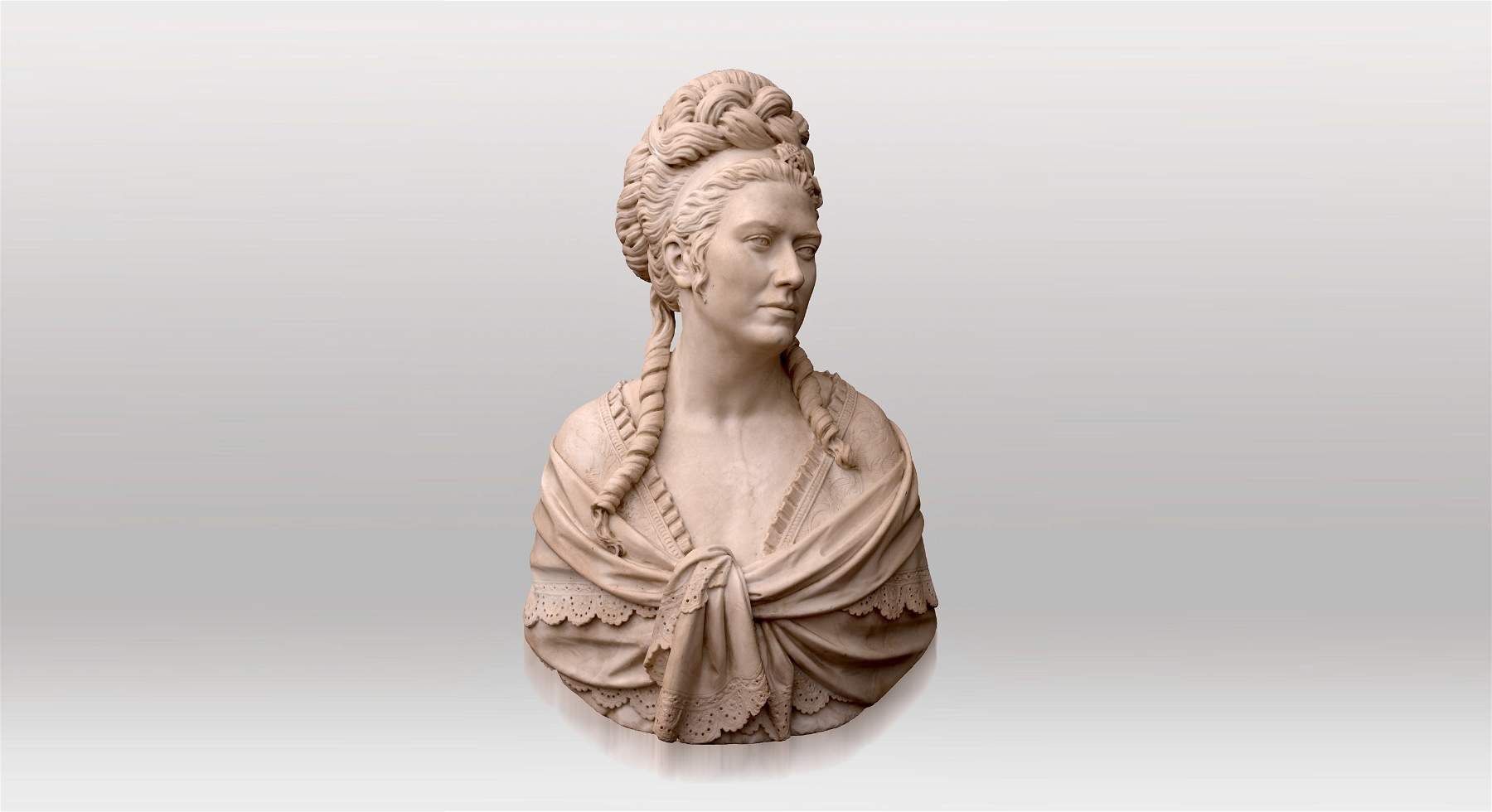An important acquisition for the Uffizi Galleries: in fact, a rare marble work by the 19th-century Tuscan sculptor Giacomo Giovanni Papini (Florence, active in the second half of the 19th century), an elusive artist about whom we know very little, comes to the museum. The work that enters the Uffizi collection is a Bust of a Gentildonna, a work signed and dated “G G Papini 1875”: it is one of the few known examples of the limited production of Papini, a remarkable figure of an artist who was very well established nationally and internationally in his time, but unfortunately, following his death, not sufficiently valued by official historiography.
Testimony to the considerable success and international recognition his artistic production received is his presence at the 1878 Universal Exhibition in Paris: in this context his plaster statue of Cleopatra dressed as Venus or Isis going to meet Antony, Roman consul, in order to sculpt and fall in love with him, was exhibited at the price of 27,000 liras, a very significant sum at the time, for the marble execution of the work. However, despite his notoriety and official recognition, after his death the figure of Papini was relegated to the margins of Italian artistic life.
The sculpture, acquired by the state for the Uffizi Galleries (as a valuable addition to the collection, which already includes another work by this author, the terracotta group entitled Il casto Giuseppe), will go on to enrich the permanent collection of the Gallery of Modern Art in Palazzo Pitti. The work enjoys an excellent state of preservation and reveals a fine and meticulous execution particularly in the details of the dress.Just today it will be the protagonist, at 12:30 p.m. of the weekly live broadcast for the Uffizi On Air series on the Galleries’ Facebook page. Presenting the Gentildonna to the public will be the coordinator of the Pitti Palace Gallery of Modern Art and curator of 19th-century Art Elena Marconi.
Papini, in this marble, also reveals himself as a keen observer of natural truth, with remarkable results, thanks to the influence from the research promoted in those years by the brilliant and unscrupulous Florentine artist Adriano Cecioni. Like him, in fact, Papini shows himself interested in the expression of the most intimate nuances of his characters’ souls, of their most hidden anxieties, and in the Gentildonna he goes so far as to suggest, in thehint of a barely visible smile on her lips, a slight caricature cue, evoking the coquettish air of Cecioni’s vibrant terracotta entitled Woman Laughing, preserved in the Gallery of Modern Art in Palazzo Pitti.
As anticipated, there is very little information about the Tuscan sculptor Giacomo Giovanni Papini. Florentine births are attributed to him, although a French source of 1878 indicates him as a native of Sinalunga; he is ascribed to the sculptors who belonged to the Florentine Academy and, again according to the French source, he is said to have been a pupil of the Sienese Giovanni Dupré (Siena, 1817 - Florence, 1882). In addition to his participation in the Universal Exhibition in Paris, his presence at the Promotrice in Turin (1880) and the exhibitions in Florence (1883, 1884) is recorded.
 |
| The Uffizi acquires a rare female bust by Giacomo Giovanni Papini |
Warning: the translation into English of the original Italian article was created using automatic tools. We undertake to review all articles, but we do not guarantee the total absence of inaccuracies in the translation due to the program. You can find the original by clicking on the ITA button. If you find any mistake,please contact us.